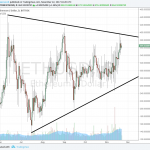During his visit to hurricane-stricken Puerto Rico, President Donald Trump shocked the bond market when he told Geraldo Rivera of Fox News that he was going to wipe out the island’s bond debt. He said on October 3rd:
You know they owe a lot of money to your friends on Wall Street. We’re gonna have to wipe that out. That’s gonna have to be — you know, you can say goodbye to that. I don’t know if it’s Goldman Sachs but whoever it is, you can wave good-bye to that.
How did the president plan to pull this off? Pam Martens and Russ Martens, writing in Wall Street on Parade, note that the U.S. municipal bond market holds $3.8 trillion in debt, and it is not just owned by Wall Street banks. Mom and pop retail investors are exposed to billions of dollars of potential losses through their holdings of Puerto Rican municipal bonds, either directly or in mutual funds. Wiping out Puerto Rico’s debt, they warned, could undermine confidence in the municipal bond market, causing bond interest rates to rise, imposing an additional burden on already-struggling states and municipalities across the country.
True, but the president was just pointing out the obvious. As economist Michael Hudson says, “Debts that can’t be paid won’t be paid.” Puerto Rico is bankrupt, its economy destroyed. In fact, it is currently in bankruptcy proceedings with its creditors. Which suggests its time for some more out-of-the-box thinking . . . .
Turning Disaster into a Win-Win
In July 2016, a solution to this conundrum was suggested by the notorious Goldman Sachs itself, when mom and pop investors holding the bonds of bankrupt Italian banks were in jeopardy. Imposing losses on retail bondholders had proven to be politically toxic, after one man committed suicide. Some other solution had to be found.
Italy’s non-performing loans (NPLs) then stood at €210bn, at a time when the ECB was buying €120bn per year of outstanding Italian government bonds as part of its QE program. The July 2016 Financial Times quoted Goldman’s Francesco Garzarelli, who said, “by the time QE is over – not sooner than end 2017, on our baseline scenario – around a fifth of Italy’s public debt will be sitting on the Bank of Italy’s balance sheet.”













Leave A Comment